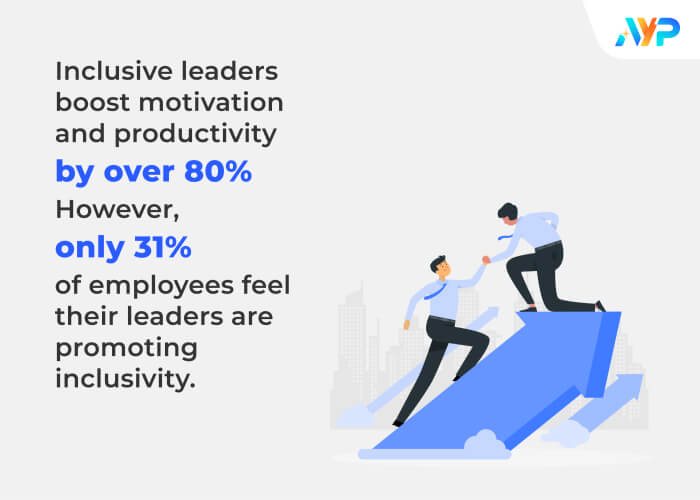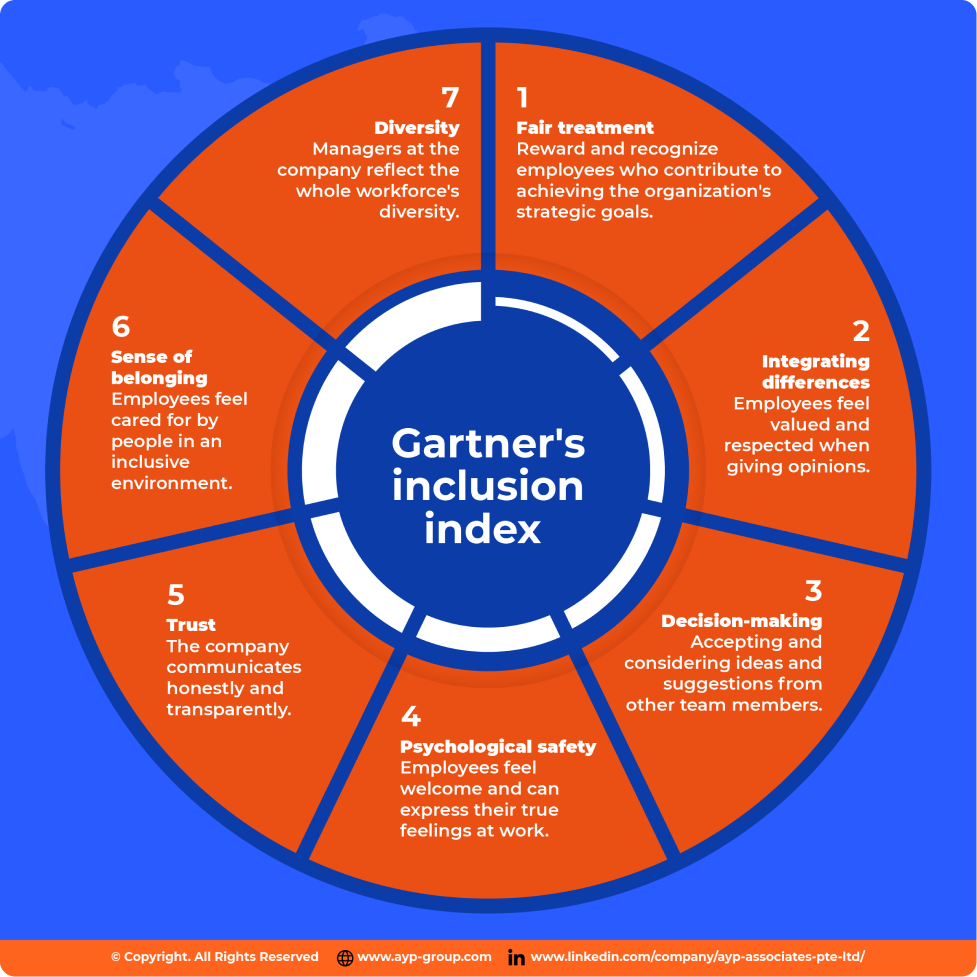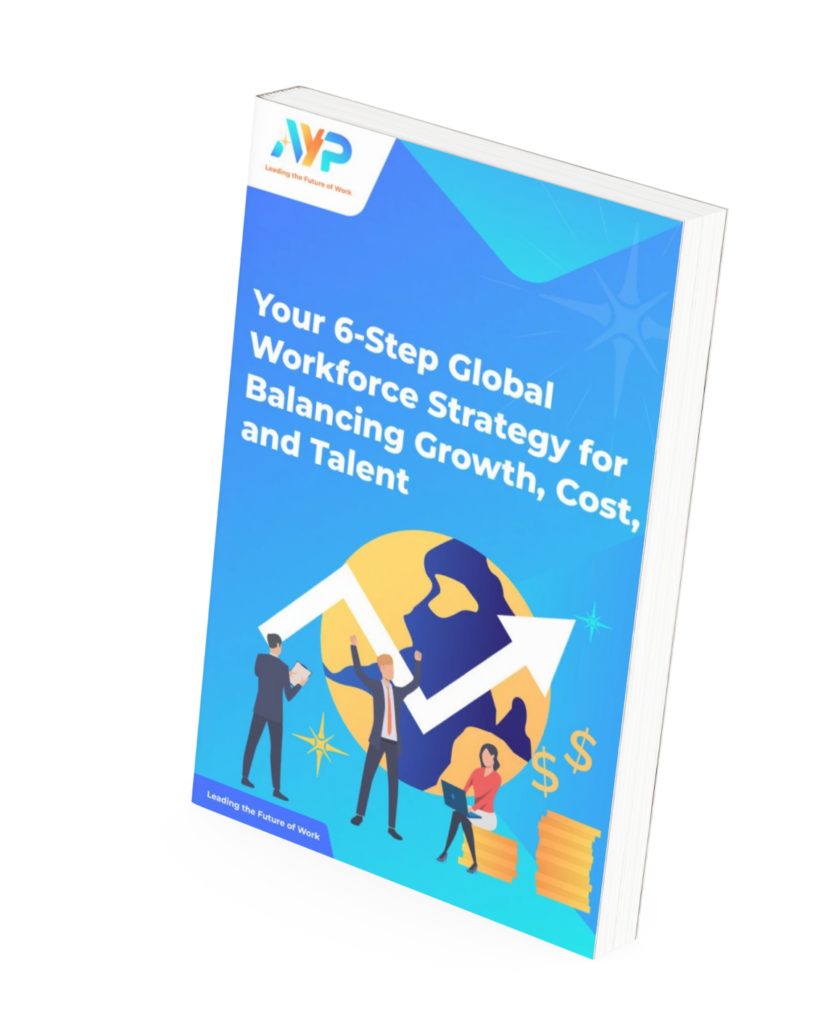Diversity and inclusion have emerged as fundamental pillars of organizational success in today's rapidly evolving corporate landscape.
Companies that embrace diversity foster an inclusive workplace for their employees and enjoy many other benefits and growth.
What is workforce diversity in HRM? Gartner defines it as the collective mixture of employees' differences and similarities, including individual characteristics, values, beliefs, work and life experiences, backgrounds, preferences, and behaviors 1
Inclusive leaders who embrace diversity can increase employee motivation and productivity by over 80%, yet it's concerning that only 31% of employees agree their leaders promote an inclusive team environment.
On the other hand, nearly half of tech employees between ages 18 and 28 considered leaving a tech job because the company culture made them feel unwelcome or excluded.
In this blog, we will explore the significance of diversity and inclusion in the workplace as examples, types of diversity and inclusion, the linkage between D&I and business performance and productivity, inclusion examples, the inclusion index that every HR must know, and the actionable strategies for HR professionals to promote diversity.

Workplace productivity issue
CNBC reported that employee productivity has declined at the fastest rate over the 4 decades 2. Simply put, employees are currently working more yet producing less.
This was aligned with a software company, Salesforce's CEO Benioff's confession that new employees are less productive than the company expected after the global disruption.
The Chief economist from KPMG, Swonk, shared that if companies want to improve employee productivity, the focus should be on engagement.
Employee engagement is about how people perceive their work and the inclusiveness of the work environment. It involves finding meaning in one's work, feeling included and given equal opportunities as an employee.
Diversity and performance
Is there a linkage between business performance and equality and diversity in the workplace?
A seven-year research with more than 700 US companies from Imperial college business school in London reported by Time revealed that 3 companies performing less than their competitors are less likely to be open in racial and gender diversity rates on their boards.
Often, diversity will not be a priority for companies experiencing profit declines when the management cannot see the benefits of diversity and inclusion in the workplace during non-performing periods. From a business management point of view, DEI strategies and efforts will always come later when the company's revenue is growing.
This was supported by the data from the Washington Post that the hiring of chief diversity officers' declination rate of 4.5% from 2021 to 2022, where DEI roles had experienced higher waves of layoffs despite companies stressing that DEI was their top priority 4.
How does diversity positively impact a business?
A 13-year longitudinal study with 240 non-financial companies listed across four countries' stock exchanges found that 5 hiring directors and leaders with diverse educational and professional backgrounds improve financial performance.
A diverse workforce offers broader access to talents from various backgrounds to establish an inclusive workplace culture. An inclusive environment with leaders and team members generates unique perspectives that enhance organizational performance, ensuring a fair decision-making process.
How can diversity help to improve an organization?
If a company is open to various ideas from people with varied backgrounds, the company will be able to become more creative and resilient.
Besides improving financial performance, a study by Forbes analyzed nearly 600 decisions made by 200 companies 6 and discovered that inclusive teams make better business decisions, at least up to 87%. A diverse team that encourages an inclusive process made decisions 2 times faster in the meetings, and the decisions delivered 60% better results.
Companies that embrace various types of diversity in the workplace—including education, personality, worldviews, and socioeconomic background—are not only able to boost productivity but also encourage thought exchange, allowing constructive conflicts and challenging conformity.

Inclusion and employee engagement
Besides demographic, a company that strongly advocates for D&I initiatives builds strong employee engagement, which is the key to excellent performance and high productivity.
A study with 1,557 respondents conducted by Deloitte intended to discover the linkage between an inclusive culture and employee engagement found that employees' perception of whether their organization is a diversified company will affect their performance and contribution. When an employee rated their company as a highly diversified and inclusive company, 80% of them rated that they are working for a high-performing company.
Regarding rating the company's performance, employees mainly look at 3 direct performance indicators in their area of contribution: customer service, innovation, and team collaboration. A highly diversified company fosters inclusive company culture, strengthening employee engagement when employees develop a sense of belonging and acceptance.
Deloitte has also investigated the actual performance data, which includes attendance and absenteeism. The findings discovered that the absenteeism record was generally low for employees who rated their company as highly inclusive.
Employees' beliefs will transform into inclusive behaviors. Specifically, for every 10% increase in employees' perceived inclusivity scores, there was a corresponding increase in work attendance of approximately 6.5 hours per year.
Learn the 6 steps of employee engagement strategies that work.

Inclusion Index that every HR must know
The combined effects of diversity and inclusion were found to reach the highest level of engagement (101%). Instead of supporting companies that embrace diversity leads to better performance, engagement is an outcome of both D&I.
For instance, Deloitte research discovered that employees who felt included in the workplace but felt lower diversity are at least 67% more engaged compared with companies that advocate high diversity levels but achieve low inclusion scores.
London School of Economics indicated that 7 the employee's beliefs could play a vital role between diversity and productivity. Suppose an employee works with management who believes that diversity will bring good results in business performance; employees have stronger beliefs that their voices will be heard and valued.
In other words, the management perspective and conveyed message will influence the employee's perception of the company, fostering inclusive behaviors that can significantly affect the individuals' productivity levels.
As an HR manager, how can you measure and promote inclusion in the company? We recommend using Gartner's inclusion index, validated by over 10,000 global employees; it is helpful to effectively measure inclusion in 7 dimensions and develop HR strategies to prevent employees from feeling excluded.

How can HR promote diversity in the workplace?
Strengthening and demonstrating your D&I efforts can go a long way in helping your company to hire top talents and bring in new customers and business opportunities.
Employees are seeking an inclusive workplace where they feel included. Companies embracing cultural diversity also allow better interaction to build business relationships with diverse clients, which is crucial for global expansion.
According to Glassdoor research, 8 3 out of 4 job seekers (76%) indicated that diversity in the workplace is a vital consideration factor when evaluating job offers. Therefore, regardless of whether you are actively implementing D&I strategies, candidates are already evaluating your company on this aspect.
However, achieving true diversity can be complex and challenging for HR teams. In recent years, collaboration with an Employer of Record (EOR) has emerged as a valuable solution to tackle these difficulties:
How can an EOR help to achieve workforce diversity?
An EOR like AYP group has helped over 100,000 customers expand to more than 17 countries.
Compliance with diversity regulations:
EORs are well-versed in Labor laws and regulations. They can assist in making sure your company complies with all applicable cross-country employment regulations, avoiding any potential unintentional discriminatory practices.
Diverse candidate sourcing:
Companies implementing the same recruiting strategy tend to invite candidates from the same talent pool. In contrast, EORs often have extensive networks and resources for talent acquisition, particularly when you plan to hire from different countries to achieve cultural diversity when building a global workforce.
Unbiased recruitment practices:
In situations where hiring speed is a concern, especially for urgent positions, hiring leaders are prone to search for a quick solution. However, this urgency can lead to unconscious bias and hinder diversity efforts.
EORs can help ensure that recruitment processes are fair and free from biases yet offer a quick hiring solution to meet your timeline.
Diversity metrics and reporting:
To achieve diversity when expanding globally, you need an HRM system that is able to measure and track diversity metrics, workforce productivity, and payroll data using a single platform.
Are you planning to hire globally or pay multinational candidates in just one (1) currency?
Register for a FREE customized plan to improve your workforce diversity.
References
- Inclusion Hacking Your Way Out of the Great Resignation
- Worker productivity is falling at the fastest rate in four decades
- Board Diversity Is Sacrificed When Companies Underperform, Study Finds
- Critics of corporate diversity efforts emerge, even as initiatives falter
- Impact of boardroom diversity on corporate financial performance
- New Research: Diversity + Inclusion = Better Decision Making At Work
- Why we need to study the links between diversity and productivity
- What Job Seekers Really Think About Your Diversity and Inclusion Stats



